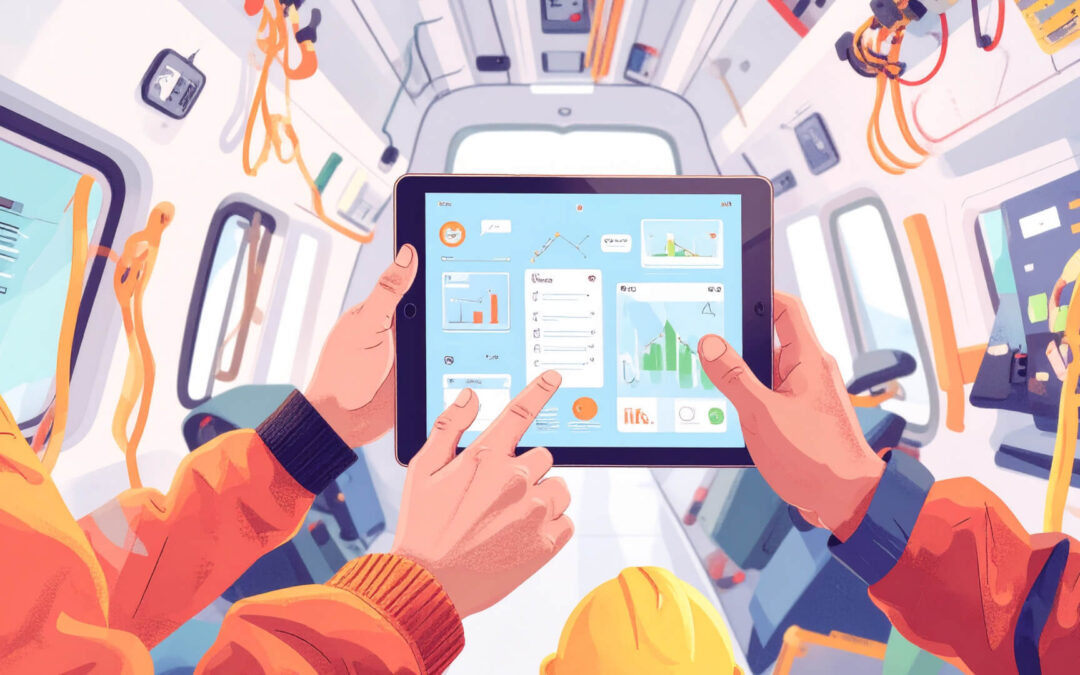The Challenge
The wind energy sector is experiencing a historic surge in demand for skilled technicians, driven by the global push toward renewable energy and the urgent need to decarbonize power systems.
According to recent industry forecasts, nearly 600,000 wind energy technicians will be needed globally over the next five years, with more than 240,000 of these roles requiring new recruits who need to be adequately trained to work safely.
In the United States alone, employment for wind turbine technicians is projected to grow by 44% through 2031. This rapid expansion is placing unprecedented pressure on wind farm operators to onboard new staff quickly and effectively. (Zippia)
When technicians are not prepared to work independently, the consequences are immediate and costly. Every day that a new hire spends under supervision or in training is a day of lost productivity.
With salaries for wind turbine technicians in the U.S. ranging from $42,000 to $80,000 depending on experience and location, and with median pay at $61,770 in 2023, even a few weeks’ delay in onboarding can amount to thousands of dollars in lost value per technician.
Moreover, unplanned turbine downtime—often linked to inexperience—can cost operators up to $30,000 per year per turbine in repairs and spare parts, not including lost production. When experienced staff must divert their attention to supervise new hires, overall team productivity suffers, compounding the financial impact.
Annual maintenance and operations costs for wind turbines are already substantial, ranging from $117,000 to $370,000 per turbine, so any inefficiencies in technician readiness can quickly erode profitability. (Business Insider)
A Smarter Approach: Microlearning & Practical Support
To address these workforce challenges, innovative solutions such as GML’s microlearning and digital support tools are transforming how technicians are onboarded. Microlearning breaks down complex technical and safety information into short, focused lessons—typically just 7–15 minutes each—that can be accessed anytime, anywhere.
This flexible approach allows new hires to progress at their own pace, reinforcing knowledge and building confidence through repetition and practical application. Studies show that microlearning can reduce onboarding time by up to 50% compared to traditional classroom-only formats.
Practical digital checklists and instant AI support further boost technician confidence and independence. These tools provide clear, step-by-step guidance for every task, reducing the risk of missed steps and errors.
AI chatbots offer real-time answers and troubleshooting, helping technicians resolve issues independently and ensuring continuous learning even in remote locations. Advanced simulation and digital twin technologies, as seen in solutions like the Labtech Wind Turbine Trainer, further enhance hands-on training and prepare technicians for real-world scenarios before they ever set foot on-site.
The wind industry is also embracing new training pathways to attract and retain talent. The Global Wind Organisation (GWO) has launched an Entry Level Wind Technician Framework, which outlines three recommended profiles for new recruits and provides clear, standardized training routes for entry-level roles in pre-assembly, installation, or operations and maintenance.
These initiatives are designed to smooth the pathway for people joining the sector and ensure that technicians are ready to contribute from day one.
Benefits
Adopting a modern onboarding approach with microlearning and digital support delivers clear, measurable benefits for wind farm operators. Faster onboarding means new technicians can work independently sooner, reducing the need for constant supervision and minimizing costly errors. This directly impacts the bottom line, as maintenance and repairs can make up 25–35% of total energy expenses.
By replacing or supplementing classroom training with targeted micro lessons and digital support, wind farm operators see a strong return on investment: new technicians reach full productivity more quickly, and the entire team operates more efficiently.
Digital tools also make it easier to update training materials, ensuring that technicians always have access to the latest information and best practices.
Companies that prioritize ongoing training and digital support report higher retention rates and more reliable maintenance schedules, which are critical in an industry where skilled labor is in high demand.
For example, some operators have achieved employee retention rates above 90% by focusing on continuous learning and support.
Conclusion
The hidden cost of slow technician onboarding in wind farms is a major barrier to operational efficiency and industry growth. By leveraging focused micro lessons, practical checklists, and instant AI support, GML helps reduce onboarding delays and ensures that new technicians are prepared to contribute from day one.
This modern approach not only accelerates time-to-competence but also delivers measurable ROI for wind farm operators—supporting the industry’s rapid expansion and the global transition to renewable energy.
With the right digital tools and training strategies, wind farms can achieve higher retention, lower downtime, and greater profitability in an increasingly competitive and fast-growing sector.




